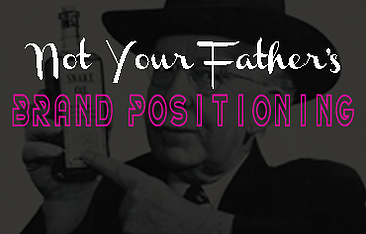
If in the year 2000 you were asked what you wanted next in a portable music device, what would you have said?
My guess is a portable Sony Discman (CD Walkman) that did not skip. The world had not yet been introduced to the Apple iPod and at the time most consumers couldn’t even envision a device with virtually unlimited music capacity that could fit in the palm of the hand. Yet after the first iPod entered the consumer consciousness demand was almost insatiable and we all know the fate of the Discman.
This scenario is akin to asking practitioners and patients to envision the future of disruptive medical technologies like immuno-oncology or gene-editing therapies before they became a reality. In general, people rely on their individual frame of reference based on their own life experiences. They can tell you what they’ve experienced, but find it immensely more difficult to relate what they really want in a hypothetical future state with any specificity.
Fifteen years ago, brand positioning was done (and in many cases still is) by interviewing physicians individually or in groups about how they would envision their use of next generation therapies, thus informing marketers on how to position their brand. Typically, responses were minor variations on conventional thinking. The pitfall of this approach is the simple fact that as humans, it is virtually impossible to accurately project our needs in an evolved, currently non-existent market state.
To be successful, brand positioning must focus on behavioral and emotional needs that lie deeper than the top-of-mind responses garnered through interviews and focus groups. That is not to say investigative insight research holds no value. In fact, it is quite the opposite. It is how we as marketers read between the lines and leverage this information to identify real marketplace tensionsand insights that are rooted deeply in human behavior and psychology.
In the case of the iPod, it was not the first portable music player in the marketplace. However, it was the first to take a step back and understand where the market for digital music was headed and why particular top-of-mind needs existed. It was only then that Apple could craft a meaningful and compelling brand positioning. One that moved beyond what the product did, and tapped into its ability to become a reflection of one’s individuality.
What may seem on the surface to be a simple process of insight mining then teasing out key positioning insights may actually take several months and some innovative research techniques to complete. To be successful this process also requires professionals with decades of strategic experience, the ability to recognize fundamental tensions and the understanding to appreciate the difference between general insights and true positioning insights.
As transformative technologies and therapies continue to present opportunities to disrupt the existing standards of care, it’s not enough to simply be “The First” or “The Only.” To maximize the success of any healthcare brand, marketers must dig deep and evolve not only their thinking, but also their methodologies. It is vitally important to deeply understand ‘Why’ patients and practitioners will believe in a new therapy before crafting ‘How’ it will be differentiated to compete in the marketplace.
~~~
OptiBrand Rx developed and continues to evolve proprietary tools that enable us to recognize important user, practitioner and payer tensions that lead to key positioning insights which truly differentiate Rx brands and ensure the right physicians prescribe the right drug (yours) to the right patients at the right time.

